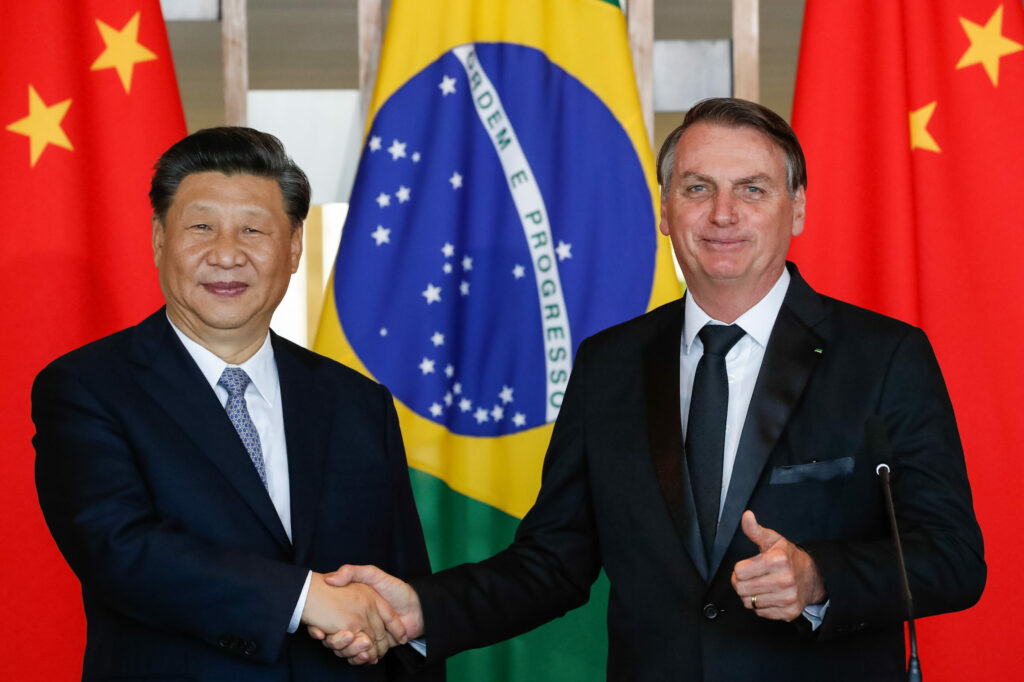Perceptions, expectations, hopes and fears of the Brazilian government and the Brazilian people keep growing on the Chinese-Brazilian economic relation. On the other stand, the Chinese government has been positive and consistent in consolidating its economic expansion in Brazil, portraying the partnership as a ‘win-win.’(Ferchen 2011). China emphasizes the benefits and the power of their relationship as an alternative to the current North-South economic dynamic, calling it South-South cooperation.
The idea of the ‘South-South Cooperation’ is indeed the exchange of resources, information and technology between countries from the Global South. An appealing idea for the underdeveloped countries that have found themselves always constrained by institutions guided by the centre/or developed countries. However, the Brazilian fear regarding their economic partnership with China stands on the question: what is the nature of this economic relationship and is it sustainable? Positive viewers of the China-Brazil economic cooperation understands that these two countries complement each other, and consequently, benefit to the same extent. Notwithstanding, many point out to the observation that Brazil is only incrementing its dependency on natural resources. Furthermore, it reproduces the dependency theory in a new framework, with a new centre: China (while in the past, the centre has always been the West).

Economic relations between China and Brazil have been historically sporadic and not of a significant impact overall. However, since China became a full member of the WTO in December 2001, trade relations with the South American country have been consolidating. Overall, from 2000 to 2010, both countries had high trade shares in their GDP while running in trade surpluses. Since 2001, their total trade combined has increased faster than the average world trade (Whalley and Medianu 2012). In those ten years, China’s trade surplus accounted for from US$ 24 billion to US$184 billion (peaked in 2008, with US$297 billion), while Brazil achieved in 2010 US$ 16.5 billion (Whalley and Medianu 2012, 711). Ever since, the impressive Chinese economic growth has resulted in an increasing demand for natural resources, pushing up the prices of commodities. In 2008 with the hit of the global financial crisis, China and Brazil demonstrated to be resistant to the crisis and to have relatively strong macroeconomic stability. Moreover, their bilateral relation was growing and standing despite the economic stagnation of the West; indeed, their trade-relation was increasing so much that the intense Chinese demand for natural resources was able to push up the prices of the commodities in 2008. In 2012 the IMF released a working paper stating that China had become increasingly important in the commodity markets in the past decade because of their increasing need and, consequently, the demand for natural resources (Roache 2012). China now plays a significant role in influencing the world trade and prices of commodities, especially in markets such as metals, agricultural, raw materials and energy markets (Roache 2012).
The decline of western FDI outflows’ supremacy and the collapse of the global financial system in 2008 created the perfect ground for the emergence of a more assertive Chinese presence in Brazil. China filled the FDI’s gaps left by the west (especially by the United States) in 2008, investing in agricultural and extractive sectors in Brazil (Arsel 2016). Economic indicators reflected the deepening of Chinese-Brazilian relations during that year. Indeed, World Bank Data has shown that in 2009 Brazilian total global exports decreased by 22.7%, but their exports to China increased by 23% (Whalley and Medianu 2012). Moreover, CEPAL reports highlighted how much Chinese-Brazilian trade relations have been growing in the past decade: Brazilian exports to China transitioned from US$1.1 billion in 2000 to US$21 billion in 2009, and 78% of those exports were accounted as essential goods, such as soybeans, beef and iron (Baumann 2009). On the other side, imports from China also went up from US$2.1 billion in 2000 to US$15.9billion in 2009 (Baumann 2009). China is now a more critical partner for Brazil than the United States (Whalley and Medianu 2012).

Nevertheless, according to a study made by the Brazilian National Development Bank (BNDES), these trends of increasing imports from China are already presenting two main disadvantages in the long run for the Brazilian economy (Pereira and Neves 2011). Firstly, these economic indicators, previously mentioned, are confirming a transition from a ‘bilateral’ exchange to an asymmetrical relation between China and Brazil. The intensification of Chinese demands for natural resources is directly expanding Brazilian primary commodity markets. At the same time, China takes advantage of the relaxation of Brazilian environmental regulations and the dependency/or necessity of foreign capital to pursue its development program (Pereira and Neves 2011). The ‘promises’ made to China affect the opportunities for the Brazilian economy to diversify (Devadason 2015). Indeed, the shares of total Brazilian exports of value-added decreased from 58% to 7.8%, and their exports of commodities increased from 41% to 92.2% (Whalley and Medianu 2012). This data analysis completely changes the nature and structure of their partnership. The trade relationship that is now present between China and Brazil is grounded on the theory of comparative advantage, and it is perpetuating the dynamic of centre-periphery economic relations, reinforcing Cardoso’s dependency theory.

Furthermore, the Brazilian economy is persisting in pursuing development through short-term solutions like Chinese FDI and exporting commodities. A second problem identified by the BNDES shows that if Brazil continues through this dependency path, the country will industrialize at a slower pace. The competitiveness for its product abroad in the future will be extremely low (Whalley and Medianu 2012). Additionally to this problem, the environmental consequences due to the intensification of the Brazilian primary sector will be irreversible. It is already affecting the main revenue of the country: natural resources. The leading cause of these negative projections upon the environment is the intensive inflow of Chinese FDI, which only benefits agribusiness and big Brazilian infrastructure firms. It has been proved that China’s increasing presence in those sectors is recognized as one of the significant drivers of deforestation of the Brazilian Amazon region. Environmentalists and sociologists are always more concerned with this Brazilian short-term development strategy.
In this framework, the countries “complement” each other by giving Brazil and natural resources stability to China. However, the relationship is asymmetric because it entails a periphery-centre relation that lacks future sustainability. The last decade of Brazilian economic growth has been attached to a specific Chinese development phase that demanded natural resources. Whereas Brazil continues to fall in its dependency on excessively commodities-export, China moves its economy to industrialization and production of manufactures.
Ti potrebbe interessare anche: “Letta vive male”. Salvini se ne frega di Mattarella e continua a bombardare il governo